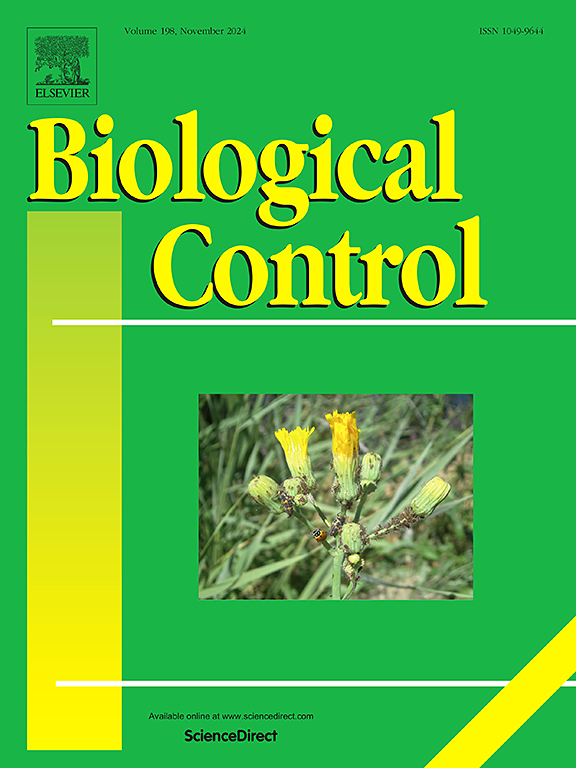Tallow tree biological control and beekeeping: Assessing the misconceptions and possible resolutions to protect native ecosystems
IF 3.7
2区 农林科学
Q2 BIOTECHNOLOGY & APPLIED MICROBIOLOGY
引用次数: 0
Abstract
Classical weed biological control is a major management tool deployed worldwide for the control of invasive plants. Classical weed biological control has a long-standing history of safe and effective weed management that has resulted in the protection of many ecosystems. Despite this history of safe and effective control, significant public opposition can occur. Plans to release biological control agents developed for the invasive tree Chinese tallow, Triadica sebifera (L.) Small received widespread and enthusiastic support from land managers and the environmental community. However, agent release was opposed by beekeeping organizations. Chinese tallow is purported to be an important nectar plant for beekeeping operations in the southeastern U.S.A. In this article, we discuss the primary concerns raised by commercial beekeepers opposed to Chinese tallow management with biological control and present data on the flowering phenology of tallow. Review of the scientific literature identified multiple studies reporting the importance of native plants to honey production, highlighting the need to protect important pollen and nectar sources from displacement by Chinese tallow. Additionally, results indicate shorter bloom periods for tallow than previously reported. These results highlight the importance of reducing the tallow invasion and protecting native ecosystems to enhance floral diversity. The implementation of a biological control program for Chinese tallow may be the best option for land managers and beekeepers at conserving native ecosystems of the southeastern U.S.A. while maintaining the services they provide.
牛油树生物防治与养蜂:评估保护本地生态系统的误解和可能的解决方案
传统的杂草生物防治是世界范围内用于控制入侵植物的主要管理工具。传统的杂草生物防治具有安全有效的杂草管理历史,保护了许多生态系统。尽管有安全有效的控制历史,但仍可能发生重大的公众反对。针对入侵树木牛油Triadica sebifera (L.)开发的生物防治剂的释放计划斯莫尔得到了土地管理者和环境界的广泛而热情的支持。然而,释放药剂遭到养蜂组织的反对。对科学文献的回顾发现,有多项研究报道了本土植物对蜂蜜生产的重要性,强调了保护重要的花粉和花蜜来源不被中国牛脂取代的必要性。此外,结果表明,开花期比以前报道的要短。这些结果强调了减少牛脂入侵和保护本地生态系统对提高植物多样性的重要性。实施中国牛脂生物防治计划可能是土地管理者和养蜂人在保护美国东南部本地生态系统的同时保持其提供的服务的最佳选择。
本文章由计算机程序翻译,如有差异,请以英文原文为准。
求助全文
约1分钟内获得全文
求助全文
来源期刊

Biological Control
生物-昆虫学
CiteScore
7.40
自引率
7.10%
发文量
220
审稿时长
63 days
期刊介绍:
Biological control is an environmentally sound and effective means of reducing or mitigating pests and pest effects through the use of natural enemies. The aim of Biological Control is to promote this science and technology through publication of original research articles and reviews of research and theory. The journal devotes a section to reports on biotechnologies dealing with the elucidation and use of genes or gene products for the enhancement of biological control agents.
The journal encompasses biological control of viral, microbial, nematode, insect, mite, weed, and vertebrate pests in agriculture, aquatic, forest, natural resource, stored product, and urban environments. Biological control of arthropod pests of human and domestic animals is also included. Ecological, molecular, and biotechnological approaches to the understanding of biological control are welcome.
 求助内容:
求助内容: 应助结果提醒方式:
应助结果提醒方式:


